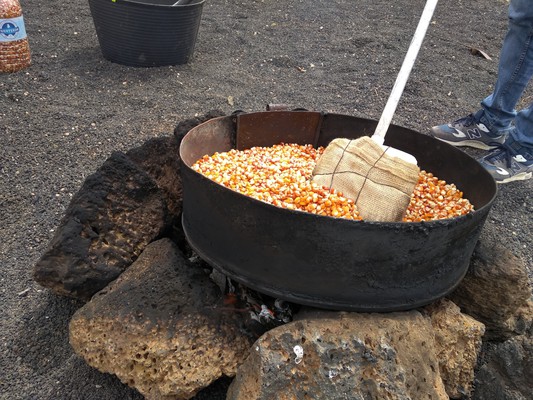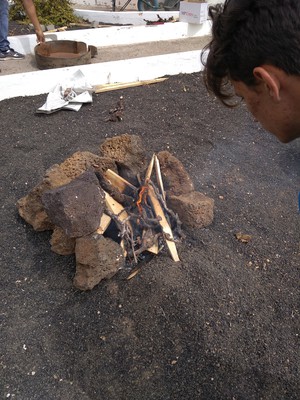HACEMOS GOFIO CON PARRAS
El lunes 25 de marzo estuvimos tostando millo (Zea Mays). Hicimos el fuego necesario con cepas de parras (Vid) que previamente habíamos podado en el Menguante.
Esta actividad se desarrolló con el alumnado de PFPBA Actividades auxiliares en viveros y los profesores Leandro León de Acuña y Teno Osorio Castañeda.
El millo (Zea mays) se tuesta para posteriormente molerlo para hacer gofio.
El gofio es una harina fabricada a partir de diferentes semillas tostadas, por ejemplo millo, trigo, garbanzos, cebada, lentejas, etc.. Es un alimento básico en la dieta Canaria y conocido desde la época previa a la Conquista de las Islas Canarias por los españoles. Se conservan molinos de piedra antiguos e incluso algún resto de gofio en algunos museos de las islas.
Ésta es otra importancia del cultivo de las parras y más en una isla como Lanzarote, en la que no existen bosques de los que se pueda aprovechar la madera para hacer fuego.
WE DO GOFIO WITH VINEYARDS
On Monday, March 25 we were toasting corn "Millo" (Zea Mays). We made the necessary fire with strains of vines (Vid) that we had previously pruned in the Waning Tree.
This activity was developed with the students of PFPBA Auxiliary activities in nurseries and teachers Leandro León de Acuña and Teno Osorio Castañeda.
The corn "Millo" (Zea mays) is roasted to later grind to make gofio.
Gofio is a flour made from different roasted seeds, for example, millet, wheat, chickpeas, barley, lentils, etc. It is a staple food in the diet of the Canary Islands and known since the time before the Conquest of the Canary Islands by the spanish. Ancient stone mills and even some gofio remain in some museums of the islands.
This is another importance of the cultivation of vines and more on an island such as Lanzarote, in which there are no forests from which wood can be used to make fire.

